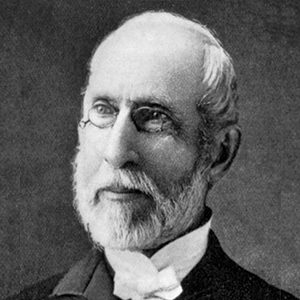 George Frederick Root (August 30, 1820 – August 6, 1895)
George Frederick Root (August 30, 1820 – August 6, 1895)
George Frederick Root was an influential songwriter, born in August 1820, in Sheffield, Massachusetts. His work mainly focused on issues regarding the American Civil War. As a young boy, Root trained on piano under the guidance of George J. Webb, and also studied the flute alongside this. At the age of eighteen years old, Root travelled to Boston with the intent to join an orchestra as a professional flautist. From the year of 1845, he taught flute, piano and general musicianship skills at the New York Institute for the blind.
During the year of 1850, Root toured Europe extensively as a highly respected and professional musician. This experience then led Root to acquiring a position at the New York Normal Music Institute, assisting William Bradbury and Lowell Mason.
From 1853 to 1858, Root worked in New York City with many other established and professional songwriters, for instance Mary S. B. Dana, Frances Jane Crosby and Rev. David Nelson. With each of these songwriters, Root had a significant part in the composition of their popular songs.
Musical Style and Influences
Contents
Root’s musical compositions consisted of simple songs, with a piano accompaniment, and melodies in a narrow range to be suitably sung by amateur singers. His famous songs, ‘Tramp! Tramp! Tramp!’ and ‘The Battle Cry of Freedom,’ became very popular songs for military and servicemen marches.
He composed many emotional ballads and songs, like ‘The Hazel Dell’ and ‘Rosalie the Prairie Flower.’
What was George Frederick Root Known For?
The Music of George Frederick Root
Although, at the beginning of his career Root focused on more popular songwriting, he then began to progress into civil war and American patriotic compositions. Since the beginning of the American Civil War, Root composed over thirty songs dedicated to the civil war. This was a time before guitar playing became popular in song writing.
His most infamous song, regarded as an anthem for the American Civil War, is ‘The Battle Cry of Freedom,’ composed in 1864. This piece was adopted for the Confederacy, and details themes such as Patriotism, unionism and abolitionism. It has also been used as an anthem during famous presidential elections, for instance, the Garfield election in 1880.
George Frederick Root Most Famous Works
During this time, around 700,000 recordings and copies of The Battle Cry of Freedom were in circulation. The popularity of this song, particularly among union soldiers within the war, was due to the references in unionism and abolitionism. Historian Christian L. McWhirther notes that this meant so many groups of differing ideologies could enjoy and identity with the text.
The song has also been utilized within popular culture for many years, right up to the modern day. It features on the Ry Cooder album, ‘Boomer’s Story,’ released in 1980; Eric Taylor adapted the song for use on his album ‘Hollywood Pocketknife,’ in 2007; Billy Bragg wrote a song based on it called ‘There is Power in a Union,’; and the song was also featured in the 2012 film ‘Lincoln.’
